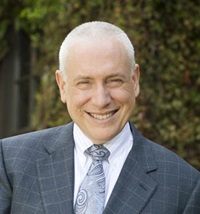Top Five myStLuke’s Myths, Debunked

In 2013, we declared our vision to deliver integrated, seamless and patient-centered quality care across all St. Luke’s settings.
On Oct. 1, that vision becomes reality in the form of our unified electronic health records system. This will be one of the most transformational steps St. Luke’s has ever taken.
As in any time of tremendous change, and despite communication efforts, untruths and misinformation can and do abound. My guest today is myth-buster Dr. Marc Chasin, St. Luke’s Health System vice president and chief information officer, to debunk some of the most commonly circulating notions.
- David C. Pate, M.D., J.D.

It’s hard to believe, but St. Luke’s is only about 100 days out from the single biggest change in the system’s 10-year history: the implementation of myStLuke’s, our much-anticipated, systemwide, common electronic health record (EHR).
Clinician, provider, non-clinical employee or patient, this change will impact everyone, albeit in different ways.
It’s the right thing to do, but a change of this magnitude can generate misinformation and create confusion. And since myths almost always accompany change, it’s important to understand the facts.
Below are the top five myths I’m hearing about as we move toward implementation, and the reality in each case. Be sure to check out the video starring the myStLuke’s implementation team.
EHRs are bad for “bedside manner.”
Does a computer ruin the interaction between patients and physicians? The opposite is true, according to a 2015 Government Accountability Office report.
The study found that EHRs equip care teams with more information and contribute to better communication. A good EHR allows clinicians to spend more time with patients and less with paperwork. Plus, patients can get real-time access to their health records through the EHR system.
You can't teach old physicians new tricks.
Although there is an initial learning curve during the adoption process, an easy-to-use EHR can significantly improve workflows with full implementation, and physicians at all stages of their careers can and do lead the charge for an EHR transition. Tools such as dictation software and customizable templates also help win over even the most technology-averse docs.
Loss of productivity during implementation will cause major setbacks.
One of the most common myths is that there will be dramatic setbacks because so much productivity is lost while staff work to learn the new system.
Most studies, however, show that a well-managed implementation project and highly engaged care teams experience lower productivity by very low levels and for a relatively brief period of time. Four months after the installation of the EHR, most systems will return to full pre-implementation productivity.
To ensure a quick bounce-back, we’re making sure that team members are involved early in the implementation process. We are also mindful that people manage change differently.
EHRs present a security risk.
Electronic records allow for stricter regulations by the Health Insurance Portability and Accountability Act than what is possible for paper charts.
Login permissions lower the risk that sensitive patient information will end up in the wrong hands or viewed by someone who does not have permission to do so. Data is also at a lower risk of being lost, as most EHRs back up documents and track when they were accessed to enhance security.
One of the biggest advantages to switching to electronic forms is that records are protected from natural disasters like floods and fires when they might otherwise be destroyed as paper documents.
EHR projects are an IT project.
Implementing an EHR is not a project for the IT department alone.
Healthcare providers that can successfully and demonstrably supply services of greater value to patients and other consumers of healthcare services will be in a better competitive position going forward. EHRs are an enabling technology, part of a larger initiative designed to help physicians demonstrate the improved value of the services they deliver by improving clinical quality and economic efficiency. This involves a cross-department effort.
On Oct. 1, the date St. Luke’s EHR is slated to go live, the promise our system has made to the communities we serve will become an even stronger reality. We will improve the health of the people in our region.
View the myStLuke’s myth-busting video.
About The Author

Dr. Marc Chasin was formerly vice president and chief information officer of St. Luke’s Health System, based in Boise, Idaho.

